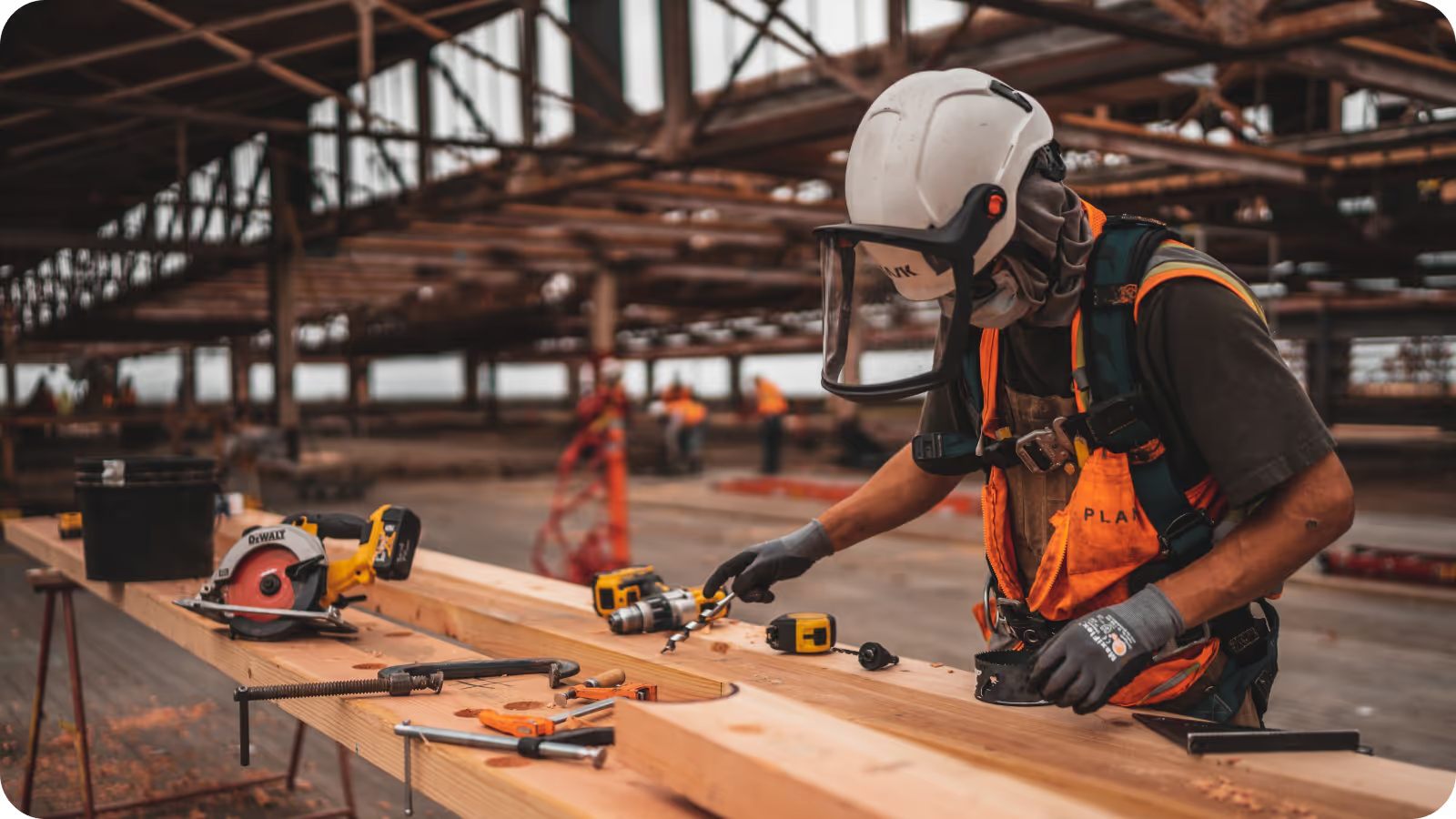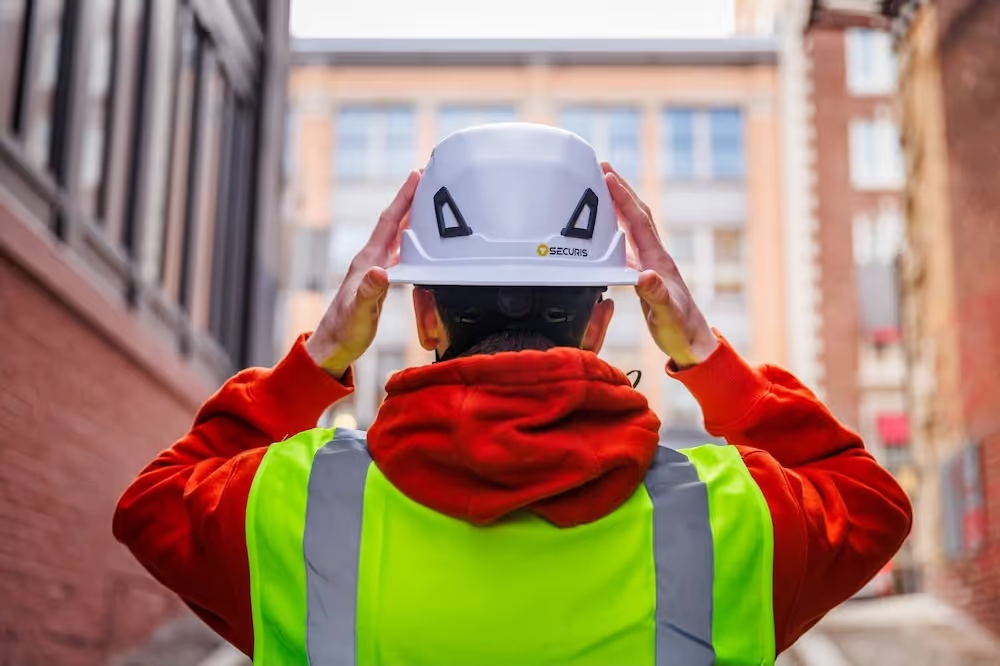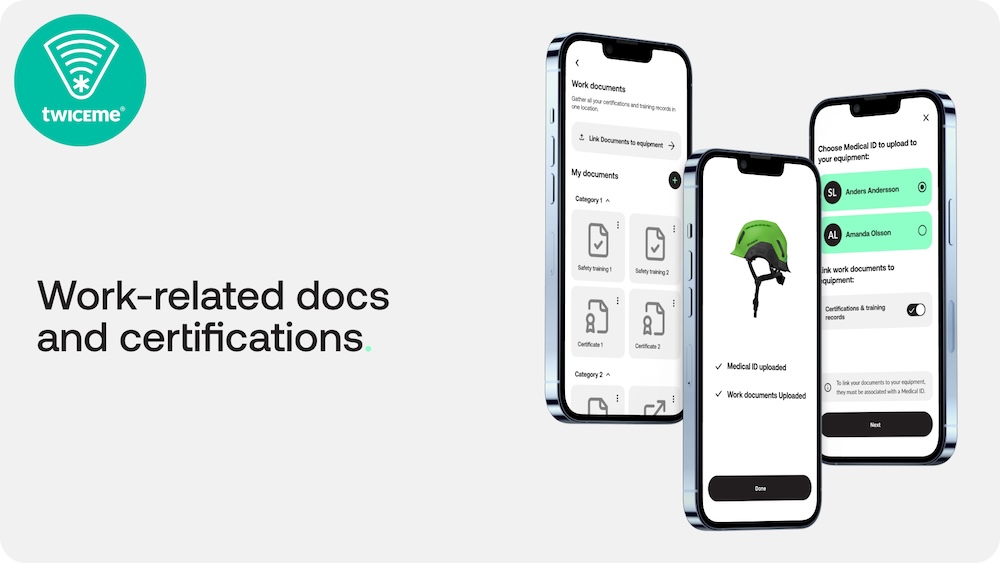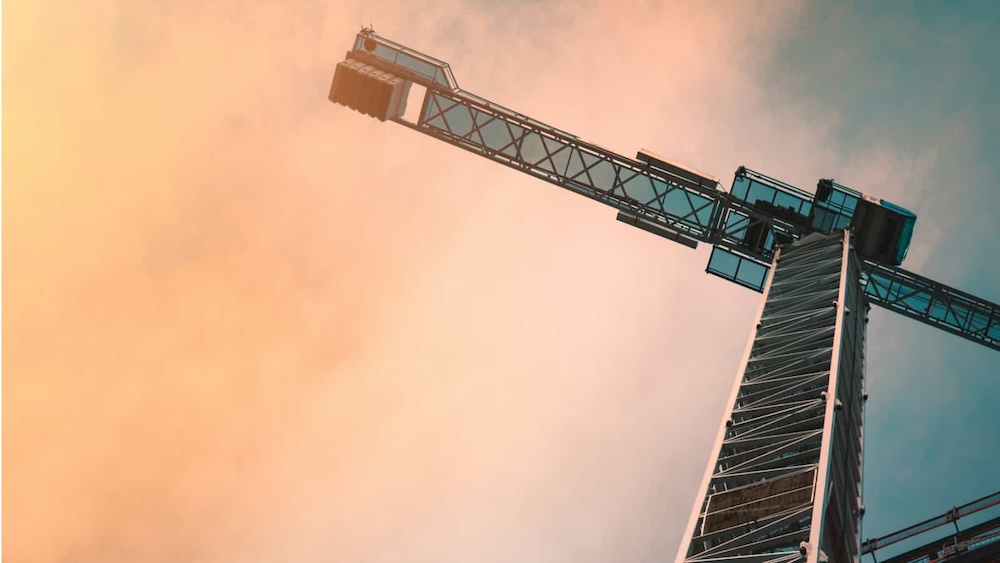How New Players in the Construction Niche Are Changing the Game of Safety and Ease-of-Use
All sectors are constantly changing with increased innovation. Even though the construction sector has been slow to adapt, signs are becoming very clear that the industry has started a journey of rapid change and innovation. We dove deeper into the topic.

Things are happening in the construction industry. Yes, the industry that is usually last to be mentioned when talking about innovation and digitalized industries, is expected to explode in the coming years.
The days of construction workers wearing the same hard hats that have been used for over a century are over.
Innovative new brands are quickly gaining market share thanks to:
- Increased safety
- Digitalized services and equipment
- Using ingredient brands to further enhance their products
In this article, we’ll talk about the history of the construction industry and how innovation is slowly picking up speed after a century at a stand-still. We’ll cover the dangers of working as a construction worker today and how things are changing for the better. Lastly, we’ll of course cover which brands are driving the transformation to safer work environments and higher standards in the industry.
Where the Construction Industry is Situated and Current Trends
Introducing the S-Chart of Innovation
Twiceme Technology was one of the first ingredient brands to help digitalize the sports industry (e.g. ski and bike), which used to be in the very early stages of development about a decade ago. Today there are several features, materials and ingredient brands that help keep you safer like MIPS, Rheon, and Twiceme to name some ingredient brands. Polycarbonate, aramid and carbon fibre as well as new versions of impact protection like Koroyd in the material department and lastly brands like Boa and Fidlock that just make life easier and more comfortable for the average adventurer. And that’s not even an exhaustive list of current innovations in the sports industry.
But again, that was not the case 10-15 years ago. We have identified similar patterns between the sports industry a decade ago to the construction industry today. And if that’s the case, we expect tremendous investments to be plowed into innovation in the coming years for the industry in order to increase safety.
What do we mean by that? Well, first of all, glance at the chart below. It’s the one chart we at Twiceme love because it describes just about any type of growth in the world.
Why? Because growth in an industry, or anything in real life, is not linear. It usually follows some other function, like in this case, logistic growth. Here’s how it goes:
- A few innovative brands act as frontrunners for the industry. Some of them fail to get enough traction that they move the entire industry forward, but others, like MIPS, take advantage of so-called “creative destruction” to completely change it for the better. This is the slow growth phase in the beginning.
- After a while, companies that previously were uninterested in the new technology begin to pick up interest. Previously thinking that they already made “enough money” on their existing products. After a while, however, they notice they’re losing market share to these new brands. And as these brands sign more partnerships, the brands lose even more customers. So, they start running to get their hands on the technology, thus the exponential growth phase in the middle.
- Lastly, as the market and industry are getting saturated, innovation slows down because of higher standards and acclimatization to the new products and their life-cycles, growth stagnates and rests on a new, higher level of innovation.
- Rinse and repeat.
Definition: Creative destruction is a term coined for when innovation breaks down old barriers, moats, and lethargic, bloated companies, to make room for new economic, and technological growth.
We’ve seen it in almost every industry that’s been digitalized throughout history. Creative destruction throws away companies that can’t stay competitive in a new landscape. To name a few:
- E-commerce and retail
- Skiing and outdoor
- Communication and workplaces
- IT, Cellphones and computers
The Covid-19 pandemic increased the speed of the transformations in some of these industries. But, they were inevitable. E-commerce had already started to take enough market share from traditional retail chains that there was no “going back”. And, as we’ve seen, a lot of them are going bankrupt because they can’t compete with these agile, venture capital-driven, brands.
Where is the Construction Industry in terms of Innovation?
As mentioned above, the construction industry is in the first slow growth phase of the transformation curve. However, in some areas, such as safety helmets and safety harnesses, innovation is rapidly increasing. Companies like:
are already changing the game in the niches they’re in. They’ve all changed the appearance of what a helmet, harness, and so forth, looks like.
Not only that but they’ve partnered up with ingredient brands to further enhance their products. That is, they use technology to their advantage and thereby taking market share which enables exponential growth. Sound familiar?
We think that thanks to these innovative brands, the safety helmet, for example, will become similar to what ski helmets are today. Safer, iconic and something you identify with. You’ll stick to the brand you love, and you use the helmet because it’s good-looking, fits great and above all, protects you.
However, even if we’re moving towards an innovative and safer future, we’re not there yet. The construction industry is still in the early stages of development when it comes to safer workplaces. States and politicians can legislate as much as they want but that won’t matter if a worker falls from heights. In those cases, they must wear a good helmet or use safety harnesses that are made to withstand extreme pressures.
Again, to draw a parallel between skiing and construction, no matter how great the skis are, and how easy it is to turn, that won’t save you if you don’t wear a helmet and fall. And, to be honest, people didn’t wear ski helmets back in the days because:
- They didn’t protect you
- They were uncomfortable
- It was cold to use them, so people went for warm hats instead
- They didn’t look stylish
And we at Twiceme Technology thinks the same goes for construction workers.
What Trends are We Seeing in Safety Products for the Construction Industry?
First of all, brands around the world in the construction industry are becoming more interested in features that enhance their products and increase safety. At Twiceme, we can definitely confirm that.
Secondly, politicians, states, and stakeholders are demanding more from construction companies in terms of safety standards and precautions. Workers being injured on the construction site might have been “a part of the job” a decade ago, but today things are different.
How? Stock markets are much more transparent, investors vote with their money, and it’s easy to buy and sell shares in companies. Media covers everything where improvement can be made and can broadcast it to anyone and everyone around the world.
Companies must be ethical and work towards as safe a workplace as possible if they want to stay in business.
With that being said, things are moving towards an industry where all stakeholders, both direct and indirect, are becoming more aware of the safety problems in the construction industry. As more people become aware of it, brands that have invested heavily in better workplace safety measures and higher standards, will come out on top.
People will drop companies that are comfortable with their position on the market and happy to keep on without innovating. Those are the so-called bloated companies. The hungry companies, such as Guardio and Studson will grab a lot of attention and, thus, market share because they continuously invest in new technology and innovation.
The History of Innovation and Safety in the Construction Industry
Innovation in the PPE and Construction Safety Market Has Been at a Stand-Still for… Too Long
For a century, the construction industry has used a lot of the same safety equipment.
But, you might say, what about the hard plastic helmets with no straps that one sees on every construction site? The answer is that they are not optimal from a safety standpoint, and we will soon see why.
As Twiceme has pointed out before, the slow innovation pace could be a reason why the construction industry suffers from disproportionately high accident rates.
A Century of Hard Hats
The safety helmets we see today are a symbol of professionalism and, to be honest, strength. At least according to this NY Times article. They’ve been worn by people who’ve built the infrastructure of every country on the planet, for over a century.
What’s interesting is that the helmet has grown into this figure because of one ironic reason. People have used it for working within heavy labor, construction, mining, and oil for (literally) a century. That is, it has stood the test of time like nothing else.
The first time construction workers were required to use any safety equipment was when the Golden Gate Bridge was built in 1933. That’s a long time ago. But not only that, the safety equipment used back then hasn’t changed. People wear the same safety helmets now.
It’s interesting and mind-boggling that a piece-of-equipment used for safety precautions can become a symbol of power, hard work, and patriotism and be used for over a century. It’s hard, if not impossible, to find anything else that has stood the test of time that well.
However, that doesn’t mean it’s a good thing. Quite the opposite. As we said, construction is equivalent to high accident rates, and a lot of them are quite serious.
Let’s see how serious.
Working in the Construction Industry is Not Very Safe (As These Stats Will Show)
A report posted in the Saudi Journal of Biological Sciences showed that the most hazardous accidents in the country of Saudi Arabia happen in the construction industry. With a big gap to the second most dangerous.
What’s even worse is that over 80% of the accidents happened when workers fell from heights. Did we mention earlier that safety helmets usually don’t have safety straps? No, but you already knew that.
The reason why you should have safety straps is that otherwise, the helmet is the first thing to fall off in the case of a casualty.
Another study showed that fatality rates in the construction industry are the highest compared to all other industries in the United States. The numbers are 3,2 fatal, work-related accidents per 100,000 workers for the US as a whole, but in the construction industry, it’s 11,4 fatal accidents. That’s almost 4 times higher than the average.
So, we could keep bringing forth stats on why a change needs to be done in the industry, but we know it’s not what you came here to read. Therefore, we will finalize this section with one last stat and move on.
Before that, however, let’s briefly touch on something major. The statistics we’ve shown so far have not explained the reason why people incur serious injuries in the construction industry. Though one can imagine why that’s the case (remember: the same type of helmet for a century), there has to be a root to the problem.
And, of course, it is. There are laws in every country as to what employers must put in place as safety precautions to help decrease the risk of accidents. According to the United States Department of Labor, construction-related violations against those laws take the top 10 positions. That is, the top 10 industries where violations against those laws happen, are in the construction or construction-related industries.
And the law to ensure working at heights is safe takes the #1 spot of most violations. That is, companies in the construction industry don’t make it a necessity to securely handle heights on the work-site. Therefore, accidents happen.
At Twiceme, we think it’s unsustainable that safety is not the #1 priority of every construction company. It must be, because of new ESG and governance standards in the financial markets, politics, and media coverage.
Investors and states won’t allow companies to lag in their safety precautions.
Therefore, the construction industry is about to change dramatically to a safer work environment. Just as the ski industry completely changed a few decades ago, when companies like POC and Smith Optics made wearing a helmet as normal as wearing skis on the slope.
The Innovative Front-Runner Brands That Are Driving Change
Safety Helmets
So, we’ve already talked about the history of innovation in the construction industry, where we’re at right now, and what trends we see in the industry of PPE, safety helmets, and safety equipment. But, what companies are driving this change?
We’ve mentioned them a couple of times already, but find it important to dive deeper into why they are important for the industry, and what they’re doing to change it.
Guardio
Guardio is a player that launched its first safety helmet with Twiceme and MIPS about a year ago, in 2020. Why choose the construction industry, you might ask? Well, according to CEO Nawar Toma and the company, they saw a clear opportunity in that niche because of low innovation and innovation costs, and that development in personal safety had been neglected and overlooked.
Twiceme couldn’t agree more. Just as we’ve hopefully brought up in this article.
Studson
Studson is another game-changer in the safety helmet industry that has a strong mission and credibility. Twiceme expects this company to push the industry forward dramatically with their products.
Why? Because the founders of Studson have a solid background in building ground-breaking products in the ski segment. The founders come from both POC and Smith Optics.
POC and Smith Optics are well-known to have been key drivers of the explosive growth in innovation the ski helmet segment has experienced in the last decade. As mentioned earlier, we expect the same to happen in the construction segment, and so do the founders. Both in terms of style and flexibility, but more importantly in terms of safety.
Last but not least, take a look at the beautiful design of Studson’s new helmet. Video
PPE
Fall Safe
Fall Safe is another company in this industry that decided that working on heights shouldn’t be equivalent to danger. Quite the opposite. Their safety harnesses are of the highest quality, and should an accident happen they’ve enhanced their products using the Twiceme®️ concept. That way, workers can store ICE information, previous health issues, and any other information they see necessary.
Each industry, sport, or activity involves different types of injuries and dangers. This is why it’s so important to be able to have the right type of information, designated to that specific sport or activity when rescue personnel arrives at a site. Twiceme allows customers to do just that, which is why companies from all over the world and from different industries are interested in it.
Zero Height Safety
Zero Height Safety is the last industry leader we’d like to mention. This kiwi company has ethics like few other companies, aiming to make their products so safe that the number of accidents when working at heights is zero.
Sure, a lot of companies throw around PR words and make it sound like they’re doing something to help their customers. Unfortunately, most don’t. That’s where Zero Height Safety differs. Let’s see how.
Firstly, they’ve decided to use ingredient brands to further enhance their products through innovative technologies. Some of them are Twiceme Technology and Koroyd.
Secondly, the company comes from New Zealand and has been in business for 20 years in the Euroasia market. Throughout those years, they’ve followed through on the mission they’ve stated. According to the New Zealand Government, work-related accident claims decreased by about 34% in the years 2002 up to 2019, or more specifically from 154 to 101.
Sure, that decrease is certainly not only from decreased cases in the construction industry (construction-related accidents are still grossly overrepresented throughout the world), but it shows the trend in New Zealand is moving in the right direction.
Discover More Exciting Content.
Explore more related articles

Securis Selects Twiceme Technology as Its Connected Safety Partner for Entire Product Line of Industrial Safety Helmets

Twiceme CEO Joins ISEA Executive Summit Panel to Discuss Connected Safety

The Digital Divide in Construction Safety

Introducing Twiceme's New Feature: Work-related Documents and Certifications Upload
.jpg)
Twiceme University: Newly Launched Online Education Platform
